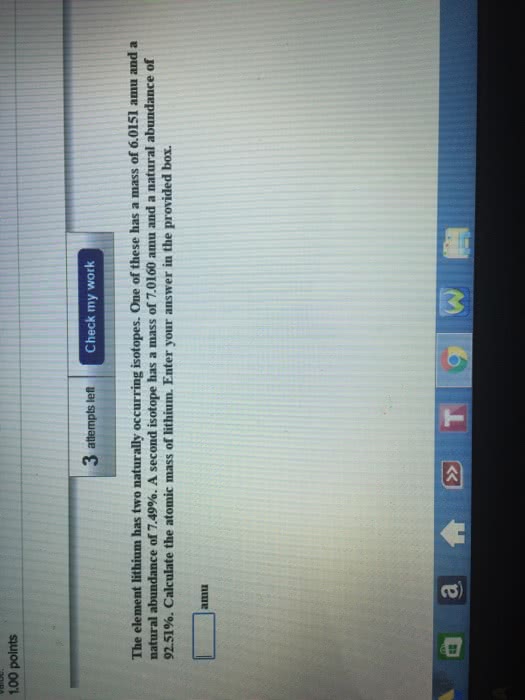
rknhassignments
RKNH AssignmentsCUNY-Lehman College
1 Follower
0 Following
0 Helped
28 Jun
Answer: To solve the problem of checking if one string (s2) is a substring of ...
28 Jun
Answer: Problem 1: Implement doubleList python Copy code # main program a = [5...
28 Jun
Answer: Create a list of 10 successive integers starting from a variable start...
28 Jun
Answer: 1. Define a predicate offset_to_synset(+Offset, ?Synset) This predicat...
28 Jun
Answer: To find the percent abundance of the second isotope, we can use the gi...
28 Jun
Answer: To calculate the atomic mass of copper (AavgA_{\text{avg}}Aavg), we u...
28 Jun
.
28 Jun
Answer: 6.9057
28 Jun
Answer: Write symbols for each of the isotopes: a. Each atom contains one prot...
28 Jun
Answer: So, the answers are: b. rubidium a. F, Cl, S, Br d. nitrogen-15 has th...
28 Jun
Answer: Name of the Element: Chlorine (Cl) Common Isotopes and Their Percent A...
28 Jun
Answer: World's Greatest Element Presentation: Carbon Element Symbol: CElement...
28 Jun
.
28 Jun
Answer: Explanation: Document Structure: <!DOCTYPE html>: Declares the d...
28 Jun
Answer: No, HTML (Hypertext Markup Language) is not a programming language. HT...
28 Jun
Step-by-step explanation: 1. History of Java Programming Language 1991: Java's...
28 Jun
Answer: Python has rapidly emerged as a leading programming language, driven b...
28 Jun
Answer: ChatGPT Printing the steps of the Tower of Hanoi problem involves recu...
28 Jun
Answer: ChatGPT Python offers several benefits that contribute to its populari...
28 Jun
Answer: To solve the system of equations: bg−d=babg - d = babg−d=ba d−mg=mad -...
28 Jun
Answer: Given the equations: x=a(sinu+cosv)x = \sqrt{a}(\sin u + \cos v)x=a...
27 Jun
Answer: (a) Number of outcomes in the sample space: When we toss a fair six-si...
27 Jun
Step-by-step explanation: (a) How many seating arrangements are there? There a...
27 Jun
Answer: Same man, same.
27 Jun
Answer: I have experienced borrowing something and unfortunately losing it. I ...
27 Jun
Answer: Lesson Review Outline: Genre of the Selection: Identify and justify th...
27 Jun
Answer: My stance on the potential of AI in mental health services is cautious...
27 Jun
Answer: Introduction: Have you ever wondered what it might be like to unravel ...
27 Jun
Answer: Introduction: Have you ever wondered what it might be like to unravel ...
27 Jun
Answer: Sure Step-by-step explanation:Nice resume though, needs more work.
27 Jun
Answer: Definitions and Descriptions Ethics: Ethics refers to the set of moral...
27 Jun
Answer: Creating a company culture that promotes both meaningful work and resp...
27 Jun
Answer: The explanation provided is correct. Here's a summary of the calculati...
27 Jun
Answer: Genre of the Story: The genre of "The Twelve Dancing Princesses" is a ...
27 Jun
Answer: NiceStep-by-step explanation:It seems like you might be offering a ser...
27 Jun
Answer: What is the question?
27 Jun
Answer: Ignored Step-by-step explanation:Question was a test, please ignore
27 Jun
Answer: Organisms in extreme environments survive through intricate communicat...
27 Jun
Answer: To address the questions given, we will follow these steps: Estimate t...
27 Jun
Answer: Let's analyze the two situations and identify which population members...



